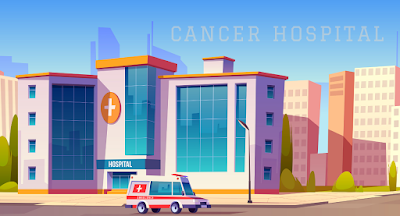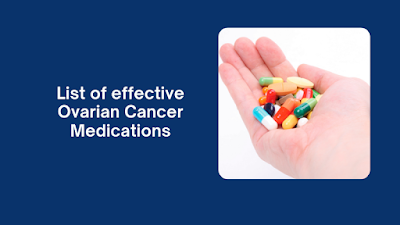Cancer mortality in India has been doubled from 1990 to 2016, and breast cancer is on the rise. According to the Indian Council of Medical Research (ICMR), it could further increase by 12% in the next five years. Now, this is the alarming data that needs to be discussed seriously in the upcoming years.
The best hospitals in India for Cancer Treatment
Over the years, India has developed its cancer care facilities, but public cancer facilities are still inadequate. That is why this unfortunate disease causes mental, physical, and financial stress on the patients and family members. We are presenting a list of the best cancer hospitals in India that you could seek for good cancer treatment.
1. Fortis Malar Private Hospital
Also known as Malar Hospital in Chennai, it is considered as one of the best multi-speciality cancer hospitals in the country. With a 25-year old legacy of providing premium-quality cancer treatment, Fortis Malar Hospital is constantly delivering innovative ways of treating cancer with the help of its qualified and experienced team of doctors.
Benefits you get
- Top-class blood cancer treatment
- An individualized treatment plan is provided by a multidisciplinary tumor board
- Comes with a success rate of 77% in radiation oncology
- You will be provided with a relationship manager for help
Address
No. 52, 1st Main Road, Gandhi Nagar, Adyar, Chennai, Tamil Nadu 600020
2. Tata Memorial Govt. Hospital
In most cases, cancer treatment is quite expensive. Acquiring a good treatment would take a lot of money. However, Tata Memorial Government Hospital comes with one of the least expensive cancer treatments with top-quality medical services in India. Established in 1941, this premium cancer treatment institute has also grown in terms of research and treatment over the years.
Benefits you get
- Free Cancer Treatment
- Less expensive
- Provides premium counseling for patients
- Avoids unnecessary tests
- Advanced treatment and extensive research on cancer treatment
- Offers digital Mammography, anesthesia delivery systems, and Surgical Microscopes
Address
Dr. Ernest Borges Road, Parel, Mumbai, Maharashtra 400012
3. Kidwai Memorial Institute of Oncology Govt. Hospital
Established in 1973, this hospital is considered one of the top cancer hospitals in India. It offers affordable and quality based cancer treatment. Here, anti-cancer drugs are sold 60% cheaper than the market price.
Benefits you get
- Surgical instruments are disposed of using gamma radiation by radiation sterilization plant
- Counseling is provided to the patient and family members
- Advanced technologies like Clinac-1800 (Linear Accelerator)is used to treat cancer
- CCX-100 autoanalyzer with a gamma camera
Address
Dr. M.H, Marigowda Road, Bengaluru, Karnataka 560029
4. AIIMS (New Delhi)
AIIMS is one of the oldest public cancer hospitals in India. Three types of technologies, such as surgery, radiotherapy, and chemotherapy, are used for treating cancer at minimal rates.
Benefits you get
- AIIMS department of oncology consists of 46 patent beds, 5 private wards, 3 major operation theatres
- Every year they perform 4000 minor and major cancer surgical procedures
- Teaching and research is being made on various cancers in order to provide doctors with better insight
Address
Sri Aurobindo Marg, Ansari Nagar East, New Delhi, Delhi 110029
5. Apollo Hospitals Private Hospital
Apollo Hospital offers comprehensive cancer treatment in the field of radiation and surgical oncology. This leading healthcare institute features advanced technologies to treat various cancers.
Benefits you get
- With 125 surgical and radiation cancer specialists, it offers 9 world-class cancer centers in India
- Stem cells and bone marrow transplantation is being offered
- This premium health institute has completed over 55 successful robotic surgeries
- Personal guidance is provided to the patient and family members
- Affordable proton therapy that kills cancer cells is available here
Address
Plot No. 64, Vanagaram-Ambattur Road, Ayanambakkam, Kil Ayanambakkam, Chennai, Tamil Nadu 600095
6. Columbia-Asia Hospital
The department of surgical oncology of Columbia-Asia Hospital comes with advanced medical facilities that can be used for detecting the early as well as advanced stages of cancer.
Benefits you get
- Screening is provided for various cancers like Colon cancer.
- Guidance is provided to the patient and the family members
- Cancer treatments like gastrointestinal tract tumors, head and neck tumors, pediatric malignancies, etc. are being done here
Address
26/4 Brigade Gateway, Beside Metro, Malleshwaram, Bengaluru, Karnataka 560055
7. Basavatarakam Indo-American Cancer Hospital
Founded by N T Rama Rao in 1989, this premium health institute aims to provide accurate diagnosis and treatment for cancer patients at lower costs. Also, it offers reasonable charges for medication.
Benefits you get
- Monitors patient condition and family condition carefully to help them
- This premium cancer institute comes with 9 operation theatres, 1 isolation room, 1 medical ICU, 6 linear accelerators, and 4 surgical ICUs.
- Experienced oncologists
Address
Road No. 10, IAS Officers Quarters, Nandi Nagar, Banjara Hills, Hyderabad, Telangana 500034
8. Yashoda Cancer Institute
Founded by Dr. G Surender Rao in 1989, Yashoda Cancer institute brings 16,000 new cancer patients every year. It always provides accurate cancer care and treatment.
Benefits you get
- They can detect cancer in the early stage with their cutting-edge medical equipment
- Dedicated CT scan facility
- Best post-operative care is being provided by the surgical observation unit
Address
16 – 10 – 29, Nallakunta Cross Rd, Malakpet, Hyderabad, Telangana 500036
9. Adyar Cancer Institute
This Chennai-based government cancer care facility provides cancer treatment at a nominal cost. They also provide free lodging and boarding to almost 60% of patients.
Benefits you get
- Free and affordable cancer treatment
- Cancer treatment is provided to over 15,000 patients annually
- Cutting-edge technologies such as rapid arc therapy and linear accelerator are used
Address
W. Canal Bank Road, Gandhi Nagar, Adyar, Chennai, Tamil Nadu 600020
10. Rajiv Gandhi Cancer Institute and Research Centre
In 2017, the India Today Group awarded this cancer hospital the most trusted hospital in oncology. Their 360-degree cancer treatment and oncology services include bone marrow transplant, surgeries related to medical oncology.
Benefits you get
- For treating prostate cancer, they use SONABLATE 500 cutting edge technology
- They have Fully equipped technology for treating lung cancer
- Reasonable medicine pricing
Address
Sir Chotu Ram Marg, Rohini Institutional Area, Sector 5, Rohini, New Delhi 110085
Disclaimer: This article is solely for informative purposes. We have no intention of promoting these hospitals and don’t urge the readers to solely avail treatment from the above-mentioned hospitals. Our intention is to inform readers about some of the services available in these top-notch hospitals.





